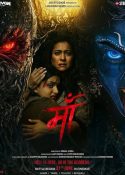 Since her death over 160 years ago, stories have been told across India about the great warrior Rani of Jhansi. Now, her tale comes to life for a broader audience in the brand new film The Warrior Queen of Jhansi.
Since her death over 160 years ago, stories have been told across India about the great warrior Rani of Jhansi. Now, her tale comes to life for a broader audience in the brand new film The Warrior Queen of Jhansi.
Directed by Swati Bhise, The Warrior Queen of Jhansi tells the true story of the legendary Rani (translation: Queen) of Jhansi, an icon in India and a fearless freedom fighter. After being wronged by the East India Company Rani resolves to defend her late husband’s kingdom. Rani instructs her all female army in the art of swordplay, a tactic unheard of during this time. Then in 1857, this 24-year old General led her people into battle against the British Empire. While the Rani’s fate is shadowed in mystery, the courageous rebellion she inspired proved instrumental in changing the balance of power in the region. The Armani’s fight for what was right for her people set in motion the demise of the notorious British East India Company and the beginning of India’s rule by a British Raj, serving under Queen Victoria.
In terms of story, scope and performances The Warrior Queen of Jhansi is an epic, full of the splendor of the history of India. However, it showcases the Warrior Queen not as a mythological person but as a young woman who is trying to do the best for her people. That is one of the things that makes the film so good. It does have epic battle scenes, but there are also moments of quiet, of bonding, of training and even some lighter moments that really bring the Rani to life in vivid color. It is a tale of little moments, little fights, big moments, and then in the end the fight of her life.
Every aspect of this film is thought out and done so well, including costumes, both English and Indian, to traditions, to the overall scope of the story. It feels fully 1857 and in no way reflects a 2019 take on the story. In fact, that is one of the things I most appreciate about this movie. It IS a film about female empowerment but it is not a film of women’s empowerment as interpreted through the lens of the 21st Century. Instead the focus remains on an incredibly brave woman fighting for the rights of her people.
The locations used in the film to portray India and Morocco were perfect and felt real to 1857 Colonial India. The cinematography was outstanding, really keeping you within the world and within the battle whether big or small. The use of blood and violence in these battles was not gratuitous but instead served the purpose of creating a realistic experience for movie goers.
Unfortunately, there are a few missteps that take the viewer out of the story. One was the editing. I got lost in some parts, not knowing where and when we were within the tale. It seemed to jump around a lot. A smoother flow to the story might have made it even more epic and the ending even more poignant.
The other thing that bothered me the most was that the characters, especially the Rani, would speak English to her Indian counterparts, then she would speak in Hindi or Marathi and it would be subtitled. It really took me out of the world. I know she probably could speak English to the English but to have her speak English when the English were not there was distracting. I know they probably wanted to make the film more accessible to a wider audience, but it was often jarring and ruined the flow of the story.
The performances really make this movie. Along with star Devika Bhise, the film features performances by Rupert Everett, Nathaniel Parker, Ben Lamb, Jodhi May and Derek Jacobi. Each of these incredible actors played their parts perfectly. Rupert Everett was a man with no understanding. Ben Lamb played the sympathetic character of someone caught up in a war he did not want to be a part of. Nathaniel Parker was pure evil. Derek Jacobi was his usual incredible and stalwart self. The Indian cast including Milind Gunaji, Yatin Karyekar, Auroshika Dey were equally brilliant.
However, it is Devika Bhise who shines the brightest as the Rani LaxmiBai. She fully encompasses this character in look, feeling, action and expression. She is vulnerable and introspective in parts, but also has an energy that is infectious and a smile that is full of mischievousness. You feel each moment alongside her; the moments she is strong; the moments when she must hide her fear and doubts and the moments of triumph and tragedy. She is absolutely wonderful in the role!
I was fascinated by the historical drama unfolding before me. I learned so much about the East India Company; about The Rani and the battle she fought. I was fully invested in this story and as the credits rolled, I discovered that I wanted more.
The Warrior Queen of Jhansi is an excellent movie about an extraordinary time and some extraordinary women in India. It is full of incredible performances, amazing visuals, and masterful storytelling.
Swati and Devika Bhise have this to say about their film: “Our hope is that every woman will look within and find the warrior spirit of the Rani.” I am certainly inspired to fight for what is right. I believe that many women, and men as well, will also feel inspired and will be changed by the journey they took as they watched Rani’s magnificent life play out on the big screen. Every woman will walk out of the film and find the spirit of the warrior within themselves and fight for the right of all!










